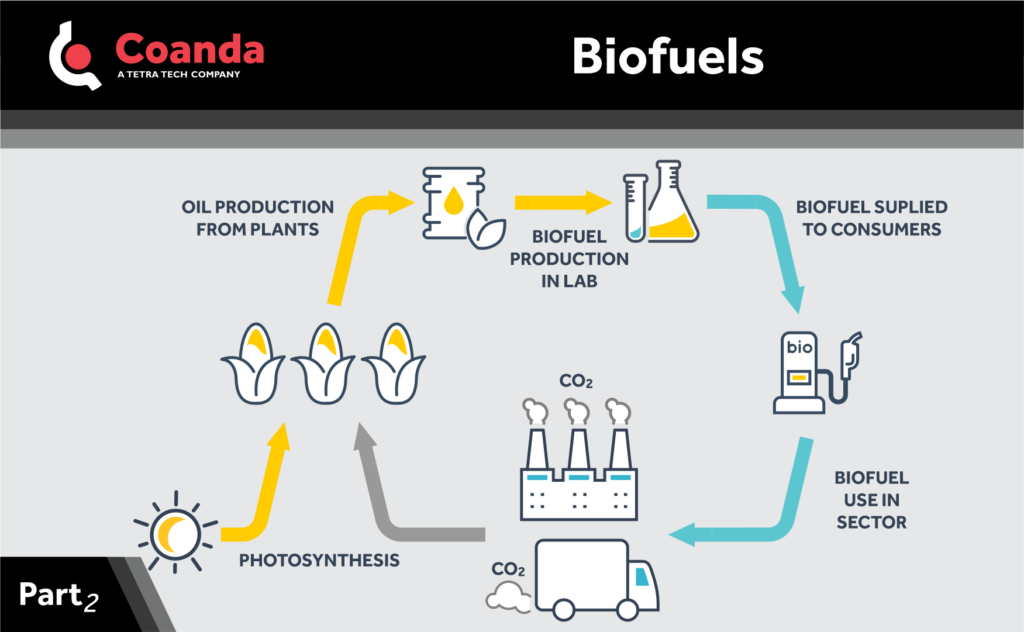Biofuels
Posted on July 27, 2023 Cleantech
This post was originally published in two parts which have been combined below.
Part 1

In prior posts, we have discussed alternative technologies for generating renewable and sustainable electricity, from well-established technologies (hydroelectricity) to emerging ones (wind, solar, and tidal energy). However, despite increased adoption of electric vehicles, the transportation sector is still dominated by the internal combustion engine, and remains the single greatest source of global greenhouse gas emissions. To meet immediate emissions targets, we need to provide transportation fuels for existing vehicles that are less carbon-intensive to produce and/or use. Realistically, this can only be achieved by increasing production of biofuels.
The two most common types of biofuels in use today are ethanol and biodiesel.
Ethanol is produced from energy crops (mainly grasses, including corn, grains, and sugarcane), most commonly by fermentation. It is frequently blended up to 10% with gasoline; however, some combustion engines can tolerate fuel that is primarily or entirely ethanol.
Biodiesel is refined from lipid feedstocks, which include waste cooking oil and animal fats, but also oil extracted from plants (soy, palm, canola) grown specifically for fuel production. There is no limit to the amount of biodiesel that can be blended with diesel fuel derived from petroleum crude.
In our next post we’ll explore the advantages and disadvantages of biofuels.
Part 2

In our previous post we outlined the role biofuel in meeting current and future energy needs. Here we look at its benefits and shortcomings.
By far, the most important advantage of biofuels is that they leverage the vast amount of existing equipment and infrastructure, not only vehicles, but also refining and distribution capacity. Additionally, ethanol provides excellent knock resistance, which reduces or eliminates the need for some harmful fuel additives, such as methyl tert-butyl ether (MTBE). And finally, CO2 emissions from production and combustion of ethanol and some other biofuels is partly offset by CO2 conversion during photosynthesis.
The primary criticism of biofuels is that distillation processes are often energy intensive, and there is often no incentive for producers to use renewable resources for refining. As a result, the reduction in overall CO2 emissions, including both production and use, is often not significant. For example, in the United States, there is currently less than 20% reduction in overall carbon emissions per unit energy output when replacing petroleum gasoline with ethanol made from corn. Elsewhere however, ethanol is produced more efficiently from other feedstocks such as sugarcane and forestry waste, and using renewable energy in processing, and reductions of CO2 emissions by upwards of 80% can be achieved.
Whether you believe the advantages outweigh the environmental costs of continuing to burn carbon fuels, one thing is clear: biofuels are less harmful to the environment than fuels produced from petroleum crude, and they represent an important means of reaching immediate greenhouse gas emissions goals.


